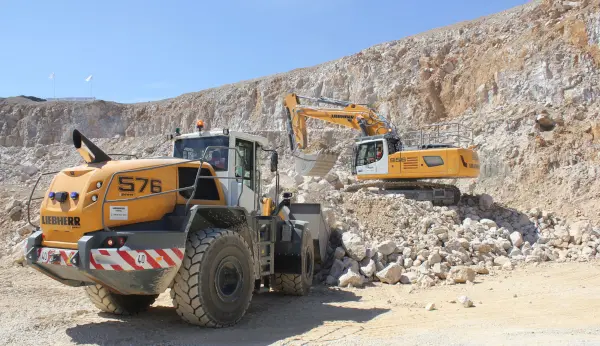CEMEX complete £1.2 million river diversion
CEMEX UK have completed the final part in the construction of a new eastern bank and diversion to the river Erewash, close to the Attenborough Nature Reserve in Nottingham.
The panels on a 26m footbridge and public right of way, known as the Trent Valley Walk, were the last section to be put in place to complete the £1.2million project.
Work on the project began in February 2009 to help improve the flow and quality of the water which previously ran from the industrial areas of Nottingham and ended in the Eastern Lake of the Attenborough Nature Reserve.
The scheme is designed to divert the flow of water away from the reserve and into the river Trent.
Today, there is a new eastern bank to the river Erewash and a channel that diverts the flow into the Trent. This will reduce the annual flow of contaminated phosphate and nitrogen-rich water water spilling into the Eastern Lake by around 99%.
As a result, the water in the reserve will be greatly improved, creating a better environment and habitat for wildlife and plants.
A key element of the project was the construction, by CEMEX, of a new weir incorporating a bridge, public footpath and fish ladder. The weir is used to maintain water levels in the nature reserve and to stop debris entering the river Trent, while the fish ladder allows the fish to pass from the Trent into the river Erewash and the nature reserve – the first time in 50 years that fish have been able to swim into these stretches of water from this direction.
Established in 1966, the 360-acre Attenborough Nature Reserve is made up of a number of gravel pits which were excavated between 1929 and 1967. The reserve has SSSI status and provides home to over 60 species of birds.
The panels on a 26m footbridge and public right of way, known as the Trent Valley Walk, were the last section to be put in place to complete the £1.2million project.
Work on the project began in February 2009 to help improve the flow and quality of the water which previously ran from the industrial areas of Nottingham and ended in the Eastern Lake of the Attenborough Nature Reserve.
The scheme is designed to divert the flow of water away from the reserve and into the river Trent.
Today, there is a new eastern bank to the river Erewash and a channel that diverts the flow into the Trent. This will reduce the annual flow of contaminated phosphate and nitrogen-rich water water spilling into the Eastern Lake by around 99%.
As a result, the water in the reserve will be greatly improved, creating a better environment and habitat for wildlife and plants.
A key element of the project was the construction, by CEMEX, of a new weir incorporating a bridge, public footpath and fish ladder. The weir is used to maintain water levels in the nature reserve and to stop debris entering the river Trent, while the fish ladder allows the fish to pass from the Trent into the river Erewash and the nature reserve – the first time in 50 years that fish have been able to swim into these stretches of water from this direction.
Established in 1966, the 360-acre Attenborough Nature Reserve is made up of a number of gravel pits which were excavated between 1929 and 1967. The reserve has SSSI status and provides home to over 60 species of birds.



